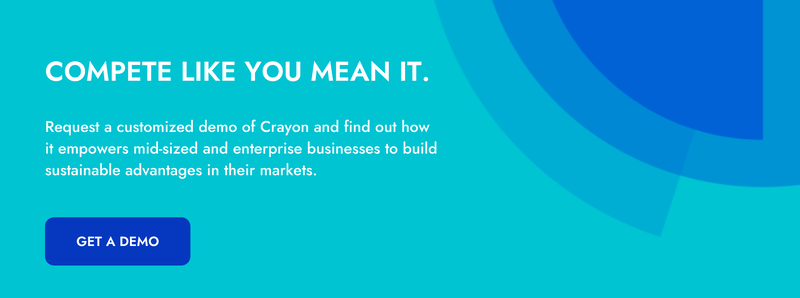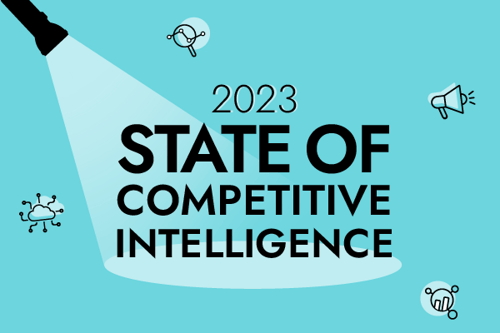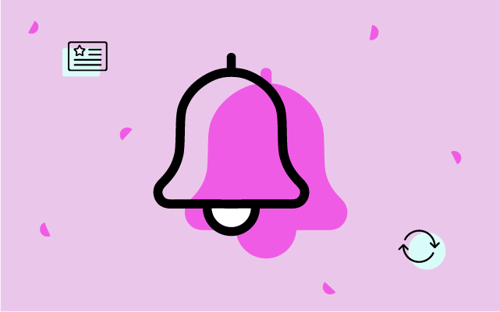Competitive intelligence (CI) done right is a big commitment. But one of the biggest misconceptions is that competitive intelligence only consists of big research projects done monthly, quarterly, or even annually. The reality is that competitive intelligence, when done well, is a daily practice. When practiced daily, competitive intelligence becomes more actionable, because your insights and takeaways are timely - and more manageable - not piling up for that quarterly research report.
So how do you make competitor monitoring a daily practice? Here are the steps you can take to keep tabs on your competitive landscape - and enable all of your internal teams with killer insights - in just 10 minutes a day.
Step 1: Organize Your Competitive Landscape
An important first step in any competitive intelligence effort is to organize your competitive landscape. This will allow you to get a high-level view of which competitors and which areas you want to focus on.
There are many dimensions by which you can split out your competitors, including by vertical, product type, and geography. These will likely be helpful distinctions that allow you to group a large competitive set. Of course, one of the most helpful dimensions for this exercise is the competitive tier, as defined by how often each competitor comes up in the sales process (or other relevant impactful business factor).
Compete like you mean it. Get a demo of Crayon ↓
Once you have your competitors organized into groups, it’s time to determine what level of monitoring you want to do for each. For tier 1 competitors, you likely want the most expansive monitoring. For more tangential companies, maybe you only want to monitor for major updates like finance events. You should leave this exercise with an organized view of your competitive landscape and CI commitments for each level.
Step 2: Set Up Your Competitive Intelligence Automation
Now, you’re ready to set up your CI automation. There are many competitive intelligence software tools available now that allow you to automate the most time-consuming CI tasks like monitoring. This is a critical step in minimizing the work that goes into monitoring your competitors and making time for higher-level CI (or even non-CI) activities.
There are two ways to automate your competitor monitoring: using a competitive dashboard and setting up competitor alerts. Using both can help you stay organized, but feel free to start with whatever is easiest for you.
A competitive dashboard will house each of your competitors, organized by the dimensions you determined previously, and give you a space to get the latest updates on each of them. You could have one whole dashboard dedicated to your tier 1 competitors that goes into depth of the various areas (such as product launches, messaging updates, marketing campaigns, etc.) for each. You can also set up dashboards for different people on your team if they focus on different segments of your competitive set. The goal of these dashboards is to automatically capture and display the latest intelligence, automatically filtered for what you care about, so you can spend time on just the latest intelligence that’s relevant to your business.
Competitor alerts can serve the same purpose, but deliver that intelligence to your inbox. Consider setting up separate alerts for each of the competitor groups and/or areas to help organize the information as you receive it. Remember, both your alerts and your dashboard are filtered down to just what will be relevant and important for you to consume as it comes in. For some segments of competitors, that may only include product updates for a specific product area. For other segments, it may include just marketing promotions. This will allow you to see just the intel you need, when you need it.
Step 3: Monitor, Investigate, Analyze
With your automation set up, it’s time to let the customized dashboards and alerts go to work for you. As new updates come through on your dashboard or email alerts (which might not even be every day!), you’ll know there’s intelligence to review that you’ve already vetted and filtered to your needs.
As this intelligence comes in, it’s time to do that investigative work. New marketing promotion? See what they’re offering and consider how it will impact sales conversations. New product launch? Check out the details and analyze the market opportunity, strengths and weaknesses versus your own solution, etc. Big updates may not happen every day, but when they do, you want to review, investigate, and analyze them as they happen to be able to take action.
Step 4: Take Action
When you do find impactful intelligence, it’s time to take action on it while it’s timely. There are three types of immediate actions you can take:
- Share the insight with relevant stakeholders: If you’ve found impactful intel, it’s time to share it with those who will be impacted. Whether that’s informing executive leadership about a competitor’s acquisition and the impact on their target market and product direction, or updating sales about a product announcement and how to handle conversations and objections around it. Get the intel in the right hands as soon as you have your insight.
- Tee it up for your monthly report: Sometimes intelligence is impactful but not urgent, and you don’t need to overwhelm all of your internal stakeholders every time a competitor makes a move. That’s a great opportunity to save that insight for a monthly report. Then, when it’s time to share that monthly report, what used to be a big research project just takes a few clicks to tie a bow on all of the insights you’ve collected on a daily basis.
- Update competitive resources: If you have evergreen competitive resources like battlecards, this is a great opportunity to make small updates as needed. Update messaging, competitive background, product details, etc. based on your new intelligence. This will ensure that the resources your team uses on a regular basis incorporate your latest findings.
Of course, the above does not include some of the longer-term competitive analyses that are indeed valuable. However, keeping a daily pulse on the competition will allow your team to regularly incorporate competitive strategy into their day-to-day responsibilities and make it easier to flesh out those analyses when the time comes.
Creating a quick, daily competitor monitoring practice can dramatically shift your competitive intelligence efforts from a hefty, one-off project to a competitive-informed culture where intelligence is part of every decision.

Seeing is believing! Check out Crayon for yourself.
Take a Product TourRelated Blog Posts
Popular Posts
-
 The 8 Free Market Research Tools and Resources You Need to Know
The 8 Free Market Research Tools and Resources You Need to Know
-
 6 Competitive Advantage Examples From the Real World
6 Competitive Advantage Examples From the Real World
-
 How to Create a Competitive Matrix (Step-by-Step Guide With Examples + Free Templates)
How to Create a Competitive Matrix (Step-by-Step Guide With Examples + Free Templates)
-
 24 Questions to Consider for Your Next SWOT Analysis
24 Questions to Consider for Your Next SWOT Analysis
-
 How to Measure Product Launch Success: 12 KPIs You Should Be Tracking
How to Measure Product Launch Success: 12 KPIs You Should Be Tracking



